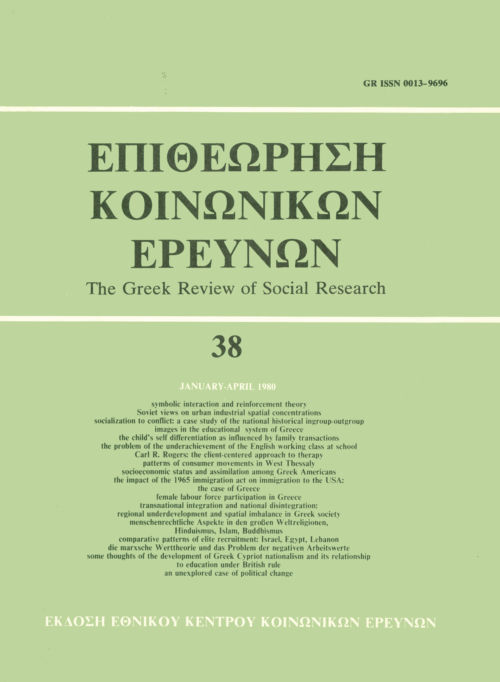Comparative patterns of elite recruitment: Israel, Egypt, Lebanon
Abstract
Part one of this paper is devoted to a genera! critique of elite
studies. Attention is called to theoretical and methodological shortcomings,
as well as to the paucity in comparative elite analysis which
is thought of as the most promising avenue of development in elite
theory. The paper then proceeds to study cross nationally approximately
400 ministerial elites in Israel, Egypt, and Lebanon by the use
of factor analytic and path analytic techniques. Specifically, two
hypotheses have been tested comparatively: III Societal characteristics.
values and aspirations tend to be reflected in recruitment
patterns, thereby shaping the collective profile of the elite; and
(2| Salient social background characteristics—of ministers—socializational
and associational—influence tenure in cabinet office.
In hypothesis 2, tenure in high office is treated as the focal point of
the elite circulation process. Tenure is conceived of as a dynamic and
theoretically potent variable. It is posited that tenure in cabinet is influenced
by psychological attributes of leaders, as well as by systemic
and situational variables which include the associational determinants
found in the social backgrounds of ministerial elites.
To test hypothesis 2, the tri-country recruitment data was used to
develop causal models based on standardized regression coefficients.
It was discovered that tenure was significantly (46%—57% influenced
by social background characteristics in the three countries.
The path models further suggested that longevity in high office may
be more strongly influenced by a leader’s associational affiliation
(social background) rather than personal attributes.
A methodological discussion of the equivalence problem and suggestions
for further comparative elite research conclude the paper.
Article Details
- How to Cite
-
Dekmejian, R. H., & Koutsoukis, K. S. (1980). Comparative patterns of elite recruitment: Israel, Egypt, Lebanon. The Greek Review of Social Research, 38, 147–163. https://doi.org/10.12681/grsr.269
- Issue
- 1980: 38
- Section
- Articles

This work is licensed under a Creative Commons Attribution-NonCommercial 4.0 International License.
Authors who publish with this journal agree to the following terms:
- Authors retain copyright and grant the journal right of first publication with the work simultaneously licensed under a Creative Commons Attribution Non-Commercial License that allows others to share the work with an acknowledgement of the work's authorship and initial publication in this journal.
- Authors are able to enter into separate, additional contractual arrangements for the non-exclusive distribution of the journal's published version of the work (e.g. post it to an institutional repository or publish it in a book), with an acknowledgement of its initial publication in this journal.
- Authors are permitted and encouraged to post their work online (preferably in institutional repositories or on their website) prior to and during the submission process, as it can lead to productive exchanges, as well as earlier and greater citation of published work (See The Effect of Open Access).



